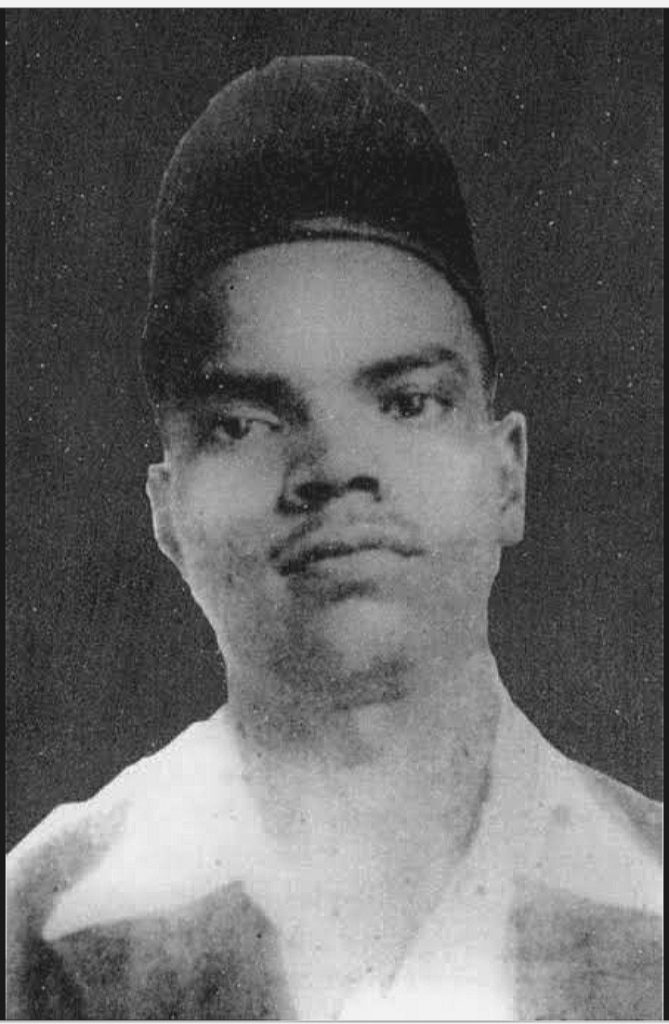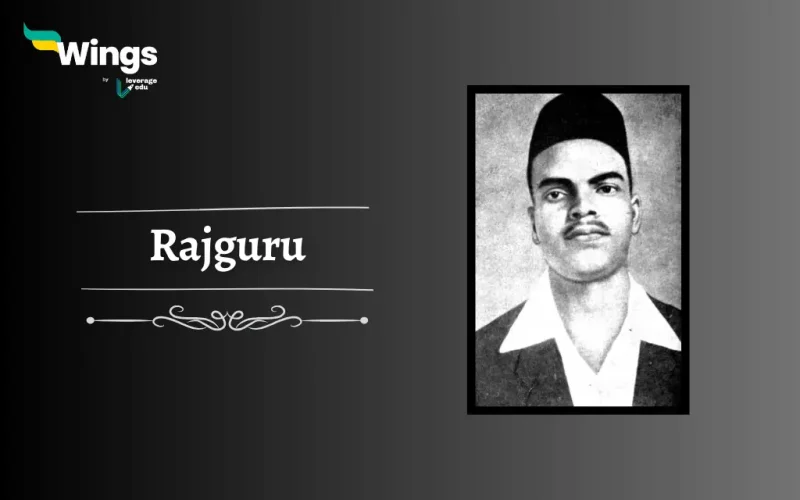Shivaram Hari Rajguru was an Indian Revolutionary, born on the 24th of August 1908 in Khed, near Pune, Maharashtra. He was one of the freedom fighters of India who fought for Indian Independence. Moreover, Rajguru also sacrificed his life for “Bharat Mata” and was hanged to death along with Bhagat Singh and Sukhdev for freedom. This blog will provide you with details about the biography of Rajguru, his role in achieving independence, and his life and death. Keep reading to learn more about the legendary freedom fighter of India!
Contents
What Was the Early Life of Rajguru?
The roots of Shivaram Hari Rajguru’s revolutionary fire trace back to his childhood in a quiet village, where whispers of British tyranny first kindled his sense of justice. This section uncovers the formative years that shaped the Indian Revolutionary Rajguru into a force of change, highlighting his family background, education, and initial brushes with activism.
- Full Name: Shivaram Hari Rajguru
- Born: 24 August 1908
- Place: Khed, Maharashtra (now called Rajgurunagar in his honour)
- Family Background: Born into a Deshastha Brahmin family, Rajguru lost his father at age six, leaving his mother and brother to raise him amid growing colonial hardships.
- Education: He studied Sanskrit and had deep knowledge of Indian scriptures, but was also drawn toward political activism from an early age.
As a teenager, Rajguru was inspired by the freedom struggle and revolutionary leaders like Bal Gangadhar Tilak and Bhagat Singh. He later joined the Hindustan Socialist Republican Association (HSRA)—a revolutionary group that believed in direct action against British colonialism.
Key Influences in Rajguru’s Youth
Rajguru’s early exposure to revolutionary ideas fueled his transformation from student to activist. Here’s how pivotal figures and events molded his path:
- Lokmanya Tilak’s Ideology: Tilak’s call for Swaraj is my birthright resonated deeply, pushing Rajguru toward direct action.
- Witnessing Colonial Atrocities: Everyday exploitation under British rule instilled a burning anger, leading him to reject passive reform.
- Joining Youth Networks: Through groups like the Seva Dal, he trained in physical fitness and ideology, setting the stage for his HSRA involvement.
This period laid the groundwork for Rajguru’s lifelong commitment, blending intellectual depth with fearless action.
Also Read: Chauhan Dynasty: Origin, Rulers and Major Achievements
Revolutionary Actions of Rajguru
As colonial oppression intensified in the 1920s, Shivaram Hari Rajguru channeled his fury into bold strikes against the British Raj. This phase marked his rise as a core member of the revolutionary underground, where he embraced armed resistance to dismantle imperial control.
From training with firearms to spreading subversive ideas, Rajguru’s actions embodied the HSRA’s motto: “Inquilab Zindabad” (Long Live the Revolution). Rajguru’s revolutionary portfolio was packed with high-stakes maneuvers that amplified the call for independence. Key highlights include:
- Joined HSRA (Hindustan Socialist Republican Association)
Became a core member of this revolutionary group that aimed to overthrow British rule through direct action. - Involved in the Assassination of J.P. Saunders (1928)
Took part in the killing of British police officer Saunders in Lahore to avenge the death of Lala Lajpat Rai. - Used Arms and Firearms in Revolutionary Acts
Was trained in the use of guns and participated in armed resistance against colonial officers. - Planned Bomb Blasts to Protest British Laws
Supported Bhagat Singh’s ideology of using revolutionary violence to shake the British government. - Spread Revolutionary Literature and Ideas
Helped circulate pamphlets and writings that encouraged Indians to rise against British oppression. - Went Underground After the Lahore Incident
Disguised himself and travelled secretly to avoid capture after the Saunders assassination. - Faced Trial in Lahore Conspiracy Case
Refused to plead guilty and accepted death with bravery, upholding his ideals till the end.

Assassination Planned by the Young Revolutionaries
The youthful revolutionaries, Bhagat Singh, Rajguru, and Sukhdev, wanted revenge for the death of Lala Lajpat Rai. They planned the assassination of James A. Scott, who was responsible for the lathi charge on Lala Lajpat Rai.
- The plan was made by members of the Hindustan Socialist Republican Association (HSRA) to avenge Lala Lajpat Rai’s death.
- Main revolutionaries involved: Bhagat Singh, Shivaram Rajguru, Sukhdev Thapar, and Chandrashekhar Azad.
- Target: James A. Scott, the British police officer responsible for the lathi charge on Lala Lajpat Rai.
- Mistaken identity: The revolutionaries accidentally shot Assistant Superintendent J.P. Saunders instead of Scott.
- Rajguru shot Saunders at close range with a revolver, while Bhagat Singh also fired to ensure his death.
- To aid their escape, Chandrashekhar Azad provided backup and cover.
- The incident took place on 17 December 1928 in Lahore.
- The successful execution of the plan shocked British officials and made the revolutionaries national heroes.
- The act was followed by the throwing of bombs in the Central Legislative Assembly by Bhagat Singh and Batukeshwar Dutt to protest against repressive laws (not linked directly but part of their continued defiance).
- The assassination became a turning point, drawing mass attention to the youth-led revolutionary movement.
23rd of March is commemorated as Martyrs’ Day in India.
The Last Days and Martyrdom of the Indian Revolutionary Rajguru
In the shadow of their triumph, capture loomed for Rajguru and his comrades, marking the harrowing close to their defiant saga. This final chapter examines the relentless pursuit, grueling trial, and ultimate sacrifice that cemented Rajguru’s martyrdom, igniting a firestorm of national resistance.
After the assassination, Rajguru sought refuge in Nagpur, then headed to Pune. Betrayed by informants, he was arrested en route in 1929 alongside Bhagat Singh and Sukhdev. The Lahore Conspiracy Case trial began in 1929, charging them with murder and sedition under a biased colonial court.
Rajguru refused to beg for mercy, defiantly stating, “We hold humanity hostage only to free it.” On March 23, 1931, at 7:30 PM in Lahore Central Jail (now in Pakistan), the trio was hanged—two hours ahead of schedule to thwart protests. Their bodies were secretly cremated on the Sutlej River’s banks to prevent public unrest.
- Age at Martyrdom: 22 years
- Execution Date: March 23, 1931
- Impact: The hurried hanging sparked riots, with crowds chanting “Inquilab Zindabad” and joining the freedom movement en masse.
The place of Khed where Rajguru was born has been named Rajgurunagar in his honour.
Enduring Legacy of the Indian Revolutionary Rajguru
Rajguru may have lived a short life, but his courage left an everlasting impact. Today, he is remembered as one of India’s youngest and most fearless revolutionaries.
- His birthplace was renamed Rajgurunagar in his memory.
- Every year, Shaheed Diwas (Martyrs’ Day) is observed on March 23 to honour him, along with Bhagat Singh and Sukhdev.
Shivaram Rajguru wasn’t just a name in history—he was a symbol of fiery patriotism and youthful courage. His story reminds us that age is no barrier when it comes to fighting for justice. He died young, but lived forever in the hearts of Indians.
FAQs
Shivaram Hari is remembered for his role and contribution in the assassination of J P Saunders, a British police officer. Although the entire assassination was planned by Bhagat Singh, Chandrasekhar Azad, Sukhdev, and him, the shots were fired by Bhagat Singh and him.
Shivaram Hari, along with Bhagat Singh and Sukhdev, is associated with the famous Inquilab Zindabad slogan. It is believed that the freedom fighters chanted this slogan before being finally hanged in Lahore Jail.
Yes, Shivaram Hari was a renowned Indian freedom fighter and revolutionary.
The village of Khed in Maharashtra, Rajguru’s birthplace, was later renamed Rajgurunagar in his honour. It’s located in the Pune district and is now a symbol of pride for its contributions to India’s independence.
Rajguru and Sukhdev were prominent revolutionaries who fought British rule. Alongside Bhagat Singh, they assassinated J.P. Saunders to avenge Lala Lajpat Rai’s death. All three were later sentenced to death and became national martyrs.
Related Reads:
This was all about the freedom fighter Rajguru. If you want to read more articles like this, you can get Study notes on the Modern History of India here. Also, you can visit our general knowledge page on Indian History!
 One app for all your study abroad needs
One app for all your study abroad needs














